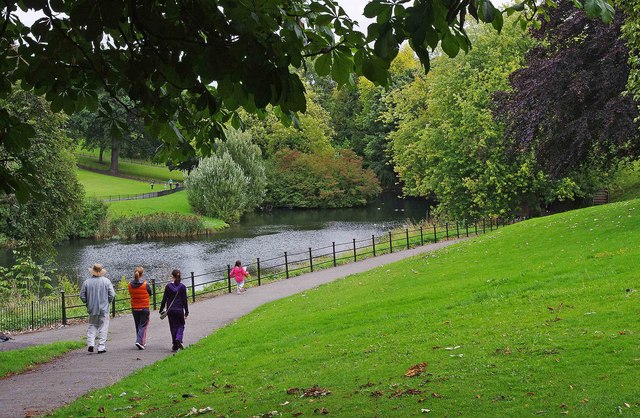
When the world came to a halt in March of 2020, people were confined to their homes, factories were shut and roads became quiet. In Ireland, the population was confined to within 5km of their homes. And with that, people relied on what was on their doorstep to support their mental and physical health. The COVID-19 pandemic changed the way that people viewed and interacted with their natural environment. Whether you lived in a densly populated urban jungle or the rural countryside, drastically impacted your quality of life. For those living in urban areas, public parks and green spaces remained open as essential infrastucture and became a refuge for people throughout the pandemic. Urban nature became a source of resilience but lack of access became a problem for many. COVID-19 highlighted the inadequacy of green spaces for urban populations and reinforced inequities regarding unequal access to parks in relation to size and quality.
Access to green space is an issue of social justice and the COVID-19 pandemic has highlighted how many people are unable to access important green areas. In many cases BAME (Black, Asian and Minority Ethnic) and lower income communities lacked access as these communities statistically share less space and have less access to public parks. It is these communities who will be hardest hit by COVID-19. Increasing green spaces in these areas is vital as it can help improve community cohesion, and reduce lonliness. These communities will also benefit from reduced socio-economic related inequalities in health when living in greener communities.
However, where people were able to enjoy access to these areas, many have recognised the importance of green spaces during the lockdown. Regular access to these spaces for as little as 30 minutes a day can help to reduce morbidity and mortality. This can be done through simple exericse like walking. Which many people took advantage of during lockdown. Green spaces also faciliate recovery from mental stress, and psychological relaxation as well as improving social cohesion by providing a safe meeting point for people to gather outdoors at a safe distance.
Green spaces also have the ability to improve pro-environmental behaviour, by providing a space for people to enjoy nature and see wildlife, sparking a positive emotional response. In addition to improving public health, greenspaces also have environmental benefits, like increasing wildlife and reducing impacts of air and noise pollution. They can reduce the risk of flooding by absorbing excess rainfall and reduce effects of climate change by absorbing carbon dioxide emissions, and provide shade, thus reducing temperatures. They are also critically important for biodiversity conservation. According to the World Health Organisation (WHO), every city should have at least 9 square meters of urban green space per person. This space should be safe, clean and accessible.
It is vital that governments take note of the lessons learned during the pandemic and make efforts to increase urban green spaces. This can be done by simply adding greenery to grey spaces or uprading already existing parks, improving basic facilities could make them more usuable spaces for the local community. The creation of new parks will increase accessibility and creating large scale regional parks in the urban fringe will provide access to large numbers of people without the need for a car. To do this properly, cities need to adopt whats called an ecosystem planning approach, which incorporates a nature based design to make cities more livable and resilient. This requires managing cities as ecosystems. Some cities, such as Toronto, incorporate this method by mapping the green dots of trees canopy cover to ensure that urban forest is well-managed. Decision makers need to develop landscapes with the benefit of plants and soil in mind.

Unfortunately, due to the costs caused by the COVID-19 pandemic, together with budget cuts, proposals to increase urban green space may be hard to achieve. Additionally, plans may fail because they are lacking the tools and techniques to implement something like an ecosystem based urban design. COVID-19 has taught us that the current quality and quantity of green space in our cities is inadequate. As we emerge from this pandemic, more focus on ecosystem based design and an increase in urban green spaces is crucial if we want our cities to continue to be pleasant to live in and also improve biodiversity and climate adaption.
References and further reading:
Bai, X. (2018, July 4). Advance the ecosystem approach in cities. Nature. https://www.nature.com/articles/d41586-018-05607-x
City leaders aim to shape green recovery from coronavirus crisis. (2020, May 6). the Guardian. https://www.theguardian.com/environment/2020/may/01/city-leaders-aim-to-shape-green-recovery-from-coronavirus-crisis
Coronavirus park closures hit BAME and poor londoners most. (2020, July 1). The Guardian. https://www.theguardian.com/uk-news/2020/apr/10/coronavirus-park-closures-hit-bame-and-poor-londoners-most
COVID curbed carbon emissions in 2020 — but not by much. (2021, January 15). Nature. https://www.nature.com/articles/d41586-021-00090-3
Life after coronavirus – The importance of the green spaces within our cities | Space. (n.d.). Space. https://www.spacearchitects.co.uk/blog/life-after-coronavirus-the-importance-of-the-green-spaces-within-our-cities
Life after lockdown: How to make green space accessible to all. (2021). Friends of the Earth. https://friendsoftheearth.uk/nature/life-after-lockdown-how-make-green-space-accessible-all
Sivarajah, S. (2020, June 11). How cities can add accessible green space in a post-coronavirus world. The Conversation. https://theconversation.com/how-cities-can-add-accessible-green-space-in-a-post-coronavirus-world-139194